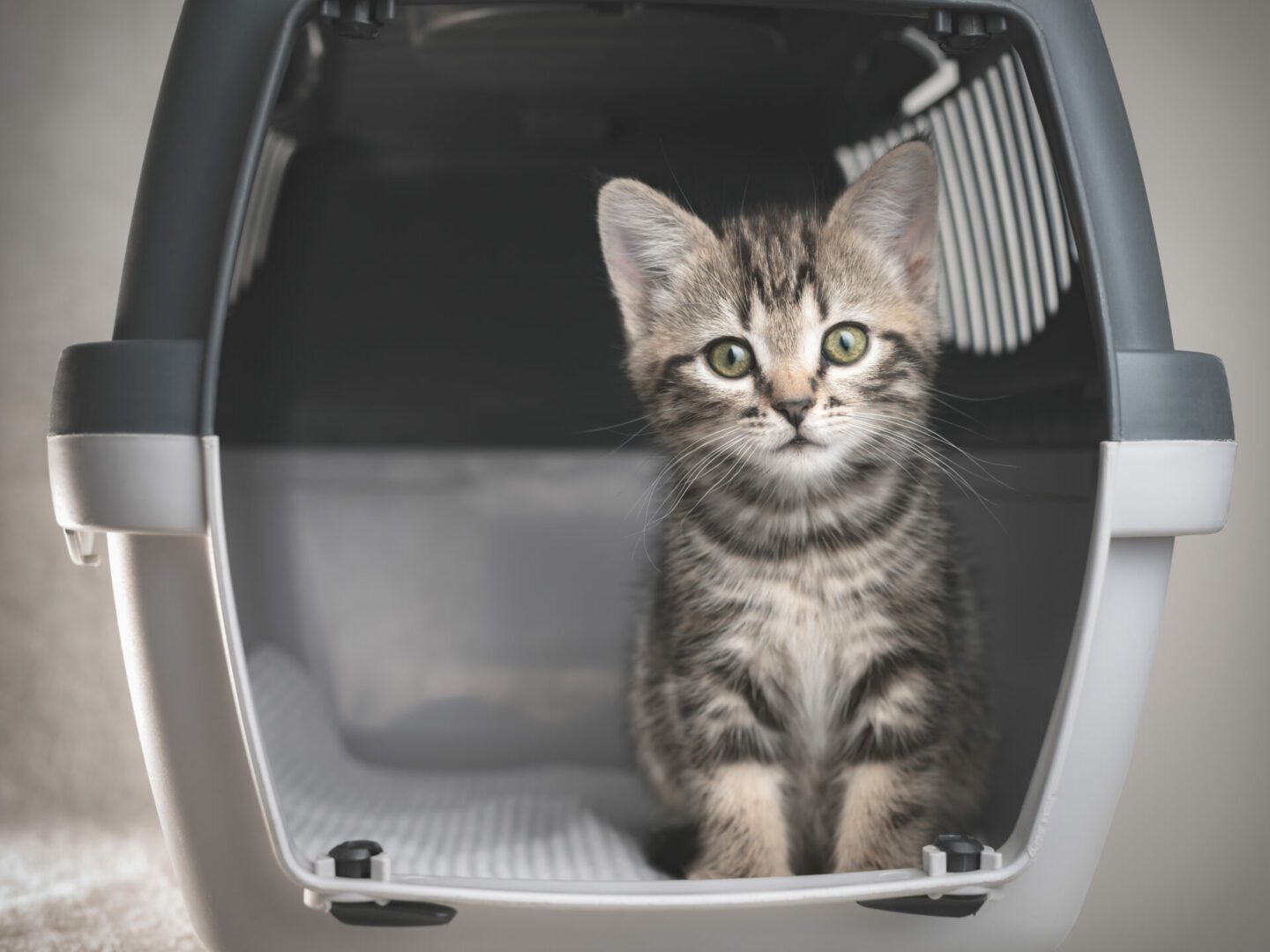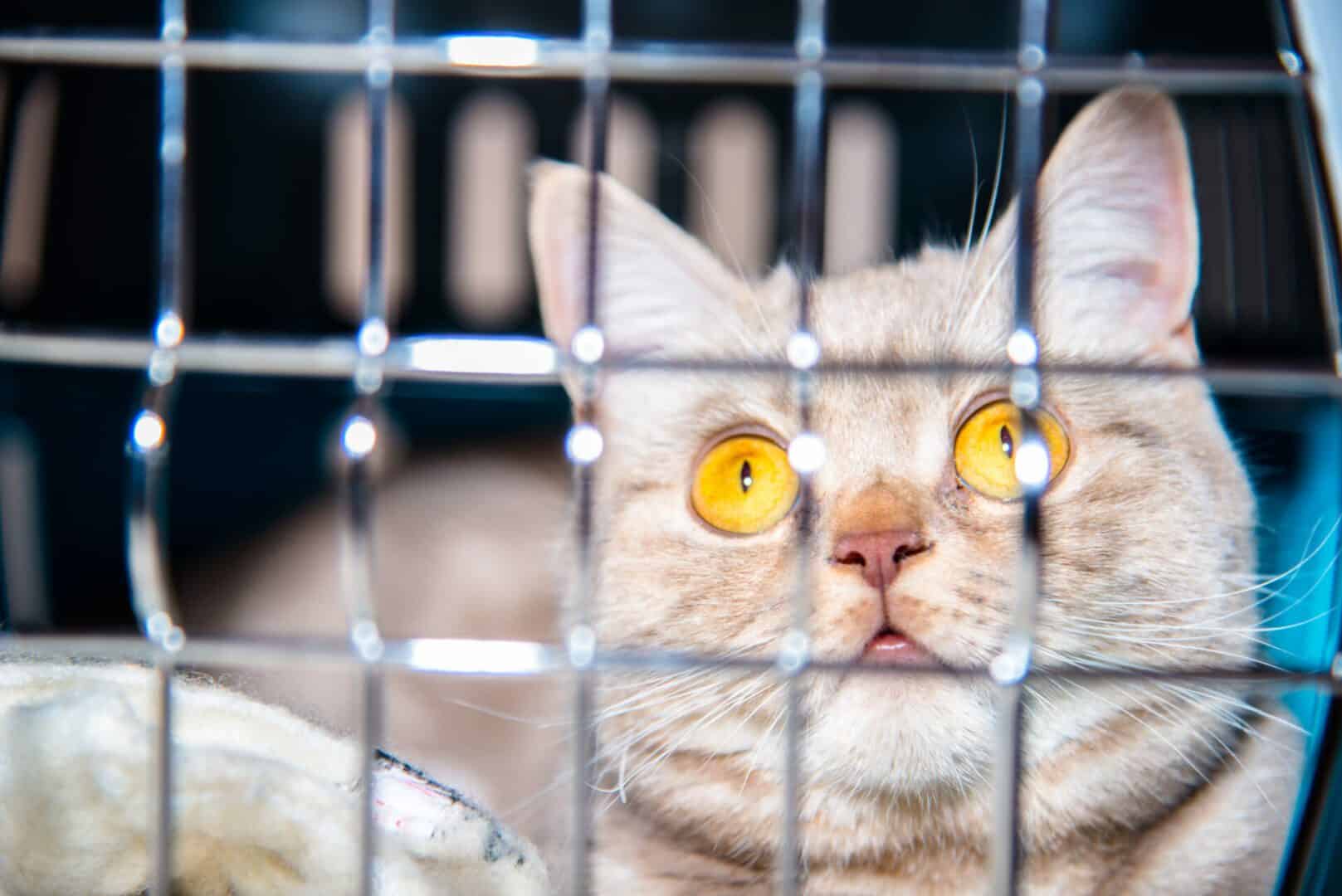Leave a cardboard box on the counter, and you can bet your cat will make themselves comfy. They'll even climb into a laundry basket or storage tote without so much as batting an eye. But getting your cat to relax in a carrier, now that's a completely different story. For one reason or another, cats and their carriers don't always get along. The enclosed space can cause some cats to lash out and stress out. But despite those dramatic reactions, there is a strong likelihood that every cat will have to be put in a carrier at some point in their lives. You can either wing it, and have that experience be a disaster, or you can be prepared.
Here are tips to help your cat learn to love their carrier no matter where they're going.
Start Young If You Can
It's never too early (or too late) to start getting a kitten used to a carrier. If you recently brought home a new bundle of fuzz, you can start carrier training as soon as your kitten has decompressed. Starting at a young age will allow your cat to grow up knowing that the carrier is a safe place to be. It's a skill that will come in handy for all those future vet visits. Regardless of your cat's age, getting them used to a carrier isn't something you can complete in a day. If the vet visit is tomorrow, there's not much hope that your cat will go to that appointment perfectly content in their carrier. It's always best to start this process a few weeks, or even months before you plan on needing the carrier.
Turn the Carrier Into the Comfiest Spot in the House
No matter your cat's age, you can start getting them used to their carrier by making it super comfortable. Line the bottom with a fluffy blanket or pillow. You should also toss in a few treats and your cat's favorite type of toy. Some cats are naturally drawn to small spaces anyway, and you want their carrier to look like the ideal space to relax or take a cat nap.
Make the Carrier Easily Accessible
The problem most cats and their people have with carriers is that they only come out in special circumstances. The yearly vet visit (which is rarely pleasant), or maybe you take an annual road trip to see cousins that always pull your cat's tail. In these situations, your smart kitty learns to associate the carrier with things they'd rather not do. The carrier signifies an unpleasant event, so, of course, they won't be able to relax. A much better strategy is to make the carrier a normal part of your cat's life. Instead of storing it on a back basement shelf, set it up somewhere your cat always has access. Keep the door open, you can even take it off for now, and put the carrier in a prime napping spot—maybe with a view out the window or next to your work-from-home desk.
Wait and Watch
Since the carrier is already set up as a prime nap spot, the goal is for your cat to wander inside all on their own. This might take a few days, or possibly weeks. Cats don't like change, so the new addition to their environment might not be welcome at first. But as long as the carrier stays in the same spot and is set up nice and comfy, your cat should eventually make their way inside. When you finally see your cat voluntarily enter the carrier, your job is to keep cool. Any sudden movements or sounds could ruin your progress. If they're happily lounging, feel free to toss them a few treats or reach in to scratch behind their ears. You want them to associate that location with only good things. Leave the door open for now as your cat gets used to being inside.
Practice Closing the Door
Closing the carrier door is the final step in convincing your cat to love their carrier. Cats love to feel secure, but they don't want to feel trapped. When that metal door closes, a lot of cats panic because they know there's no escape. This is what you want to avoid. You want your cat to remain calm and know that no matter what, they are safe in their carrier. Don't try closing the carrier door until your cat is regularly going into the carrier on their own. Once this happens, start by keeping the door closed (with the cat inside) for only a few seconds. Close the door, count to 10, and then open it again. Do this every time your cat is inside until they don't care anymore. After a few times, start leaving the door closed for longer. If your cat seems unperturbed, close the door and walk away. If at any time your cat starts to panic, cut the lesson short. The last thing you want to do is traumatize them. Teaching a cat to love their carrier will take time and a lot of trial and error. Once you reach the closed doorstep, you might take a few steps backward before you can move forward. The key is to always be calm and to not rush progress.






